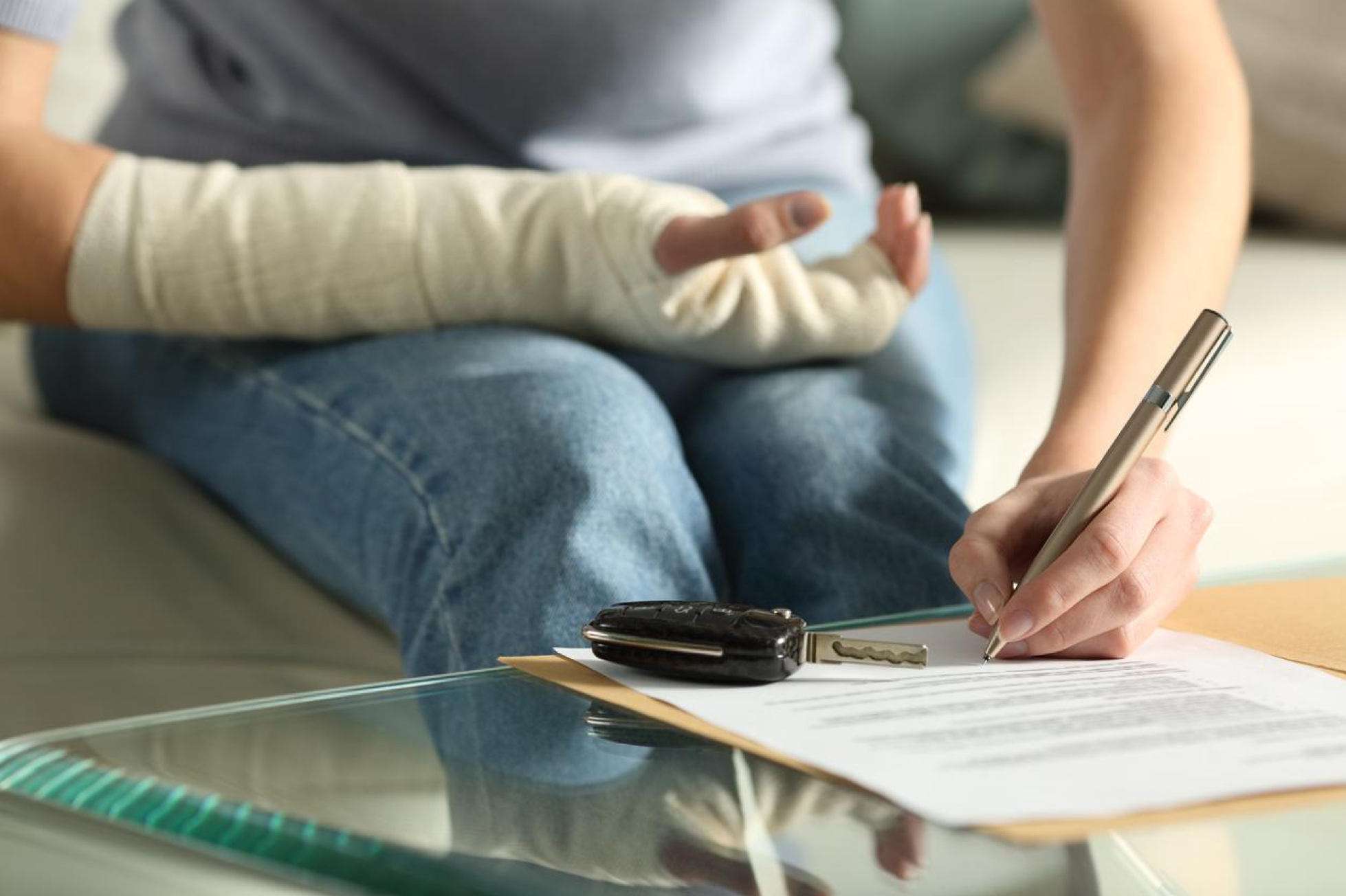Now Reading: How Pain and Suffering Damages Are Determined in Personal Injury Claims
-
01
How Pain and Suffering Damages Are Determined in Personal Injury Claims

How Pain and Suffering Damages Are Determined in Personal Injury Claims
Pain and suffering damages are compensation awarded to personal injury victims for the physical discomfort and emotional distress caused by an accident. Unlike medical bills or lost wages, which are easy to calculate, pain and suffering damages address the intangible effects on a person’s life, such as ongoing pain, anxiety, loss of enjoyment, or trauma from the injury.
Table of Contents
- How Personal Injury Law Recognizes Emotional and Physical Harm
- What Are Damages in Personal Injury Cases
- How Pain and Suffering Damages Are Calculated
3.1. Economic vs. Non-Economic Damages
3.2. The Multiplier Method Explained
3.3. The Per Diem Method - Examples of Pain and Suffering in Real Life Cases
- What Evidence Strengthens a Pain and Suffering Claim
- Common Myths About Pain and Suffering Compensation
- Tips for Maximizing Your Claim
- Protecting Your Right to Fair Compensation
How Personal Injury Law Recognizes Emotional and Physical Harm
Picture this: someone injured in a car crash may have their hospital bills paid and receive compensation for time off work. Yet the lingering back pain, the sleepless nights, and the anxiety of driving again are not reflected on a receipt. This is where pain and suffering damage step in. They recognize that healing is not only physical but also emotional.
For many victims, this part of the settlement makes the biggest difference in rebuilding their quality of life. Understanding how it works can help you approach your case with more confidence and realistic expectations.
What Are Damages in Personal Injury Cases
Damages are the legal term for the money awarded to someone harmed by another party’s negligence. They fall into two broad categories:
- Economic damages: medical expenses, rehabilitation costs, lost wages, and property damage.
- Non-economic damages: pain, suffering, mental distress, loss of companionship, or reduced ability to enjoy life.
Pain and suffering sits firmly in the non-economic category. It compensates for the intangible losses that cannot be measured by invoices. A skilled personal injury lawyer can help demonstrate the full extent of these losses and ensure they are properly valued in your claim.
How Pain and Suffering Damages Are Calculated
Economic vs. Non-Economic Damages
Economic damages are straightforward. Your lawyer can add up receipts, invoices, and pay stubs. Non-economic damages, however, require judgment. Two people may break a leg, but the impact can differ; one may recover quickly, while the other may face lifelong pain that limits their career or hobbies.
An insightful analysis from Legal Matters Canada, explains how Canadian courts determine non-pecuniary (pain and suffering) damages, including influential factors like injury severity, duration, the plaintiff’s personal circumstances, and how the $100,000 cap set by the Supreme Court of Canada has been adjusted for inflation.
The Multiplier Method Explained
One common approach is the multiplier method. Here, the total economic damages are multiplied by a number (usually between 1.5 and 5) depending on the severity of the injury.
- Minor sprains might be closer to 1.5.
- Long-term or permanent disabilities may warrant a multiplier of 4 or 5.
For example, if your medical bills and lost wages total $50,000, and the multiplier is 3, pain and suffering damages could reach $150,000.
The Per Diem Method
Another method is the per diem calculation, which assigns a daily dollar value to your suffering. The figure is multiplied by the number of days you are expected to experience pain or distress. If the per diem is set at $200 and you suffer for 300 days, that amounts to $60,000.
Courts and insurance companies may use these methods differently, so having a knowledgeable attorney is key.
Examples of Pain and Suffering in Real Life Cases
To make this concept less abstract, consider the following scenarios:
- Car Accident: A young athlete suffers a knee injury that prevents them from competing again. Beyond medical bills, compensation covers the emotional loss of giving up a passion.
- Slip and Fall: A worker fractures their wrist, struggles with daily tasks, and experiences frustration over temporary dependence on others.
- Medical Malpractice: A patient misdiagnosed with a serious illness lives with anxiety and stress even after discovering the mistake.
These cases illustrate how pain and suffering damages account for unique personal struggles that economic compensation alone cannot cover. Working with an experienced injury lawyer can make a significant difference in demonstrating these impacts and securing fair compensation.
What Evidence Strengthens a Pain and Suffering Claim
Courts and insurers need proof, even for intangible losses. Strong evidence may include:
- Medical records documenting ongoing pain or limitations.
- Therapist or counselor notes addressing emotional impact.
- Personal journals describing daily challenges.
- Testimony from family, friends, or coworkers.
- Expert medical opinions on long-term prognosis.
The more concrete your evidence, the harder it is for the opposing side to dismiss your claim.
Common Myths About Pain and Suffering Compensation
Myth 1: Only severe injuries qualify.
Even moderate injuries that interfere with daily life may justify pain and suffering damages.
Myth 2: Pain and suffering is easy money.
In reality, proving emotional distress and securing fair compensation requires detailed evidence and legal strategy.
Myth 3: Insurance companies will calculate it fairly.
Insurers often undervalue these damages. A lawyer’s negotiation can make the difference between a minimal payout and a meaningful settlement.
Tips for Maximizing Your Claim
To strengthen your case and improve the chances of fair compensation, consider these steps:
- Seek medical treatment immediately. Delays can weaken your claim.
- Follow your treatment plan. Skipping therapy sessions may suggest your injury is less serious.
- Document your recovery. Keep notes and photos of your progress and setbacks.
- Consult a lawyer early. Professional guidance ensures you don’t miss critical opportunities.
- Avoid discussing your injury on social media. Posts can be used against you.
Protecting Your Right to Fair Compensation
Pain and suffering damages are designed to recognize the human side of an injury. While medical bills and lost wages are measurable, the emotional toll and physical discomfort are just as real.
If you or someone you know is navigating a personal injury claim, understanding how these damages are evaluated can help you advocate for a fair outcome. The right legal support and thorough documentation ensure that your recovery, both physical and emotional, receives the recognition it deserves.











